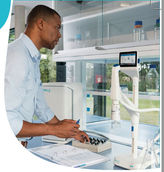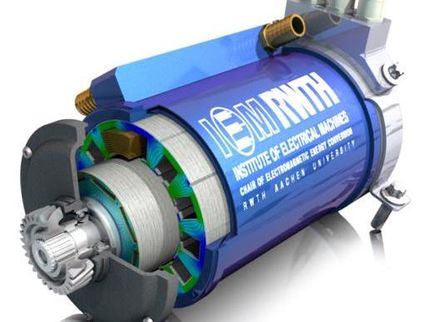PTB testing method for finger ring dosemeters has proven its effectiveness
Finger ring dosemeters are used at diverse workplaces having ionizing radiation, e.g. in medicine and industry, in order to check whether the effective dose limt values are adhered to. The dosemeters used to measure beta radiation have been subjected to an annual quality control by the PTB for six years now. Since then, all dosimeter models used in Germany have passed these controls.
In Germany, for persons who are occupationally exposed to radiation, monitoring with personal dose equivalent meters is legally prescribed. Besides the whole-body dosimeters which are to be worn on the trunk, also passive extremity dosimeters are used which are often worn around the fingers. Extremity dosimeters are used for beta radiation measurements, especially in medicine. All dosimeters of this type are released and assessed by dosimetry services. PTB is thereby responsible for quality control. Quality control takes place in two stages:
In the first stage, the designs are submitted to a thorough check with regard to their properties before the dosimeter is released for use. In the case of beta dosimeters, this control is carried out according to a directive.
In the second stage, the routine operation is checked yearly at the dosimetry services via so-called "periodic comparison measurements". The dosimeters are thereby exposed by PTB to a well known dose - which we we will call HPTB in the following. Then, the dosimetry services analyse the dosimeters and determine their measured value, HDST, of course without knowing the value of HPTB. As a measure of quality, the quotient HDST/HPTB is used which is 1.0 for an ideal dosimeter.
The condition for passing the yearly comparison measurements is that 90% of all quotients for each design of a service lie within these limits. If this requirement is not met by one dosimeter design for the comparison measurement, a repetition is carried out for this dosimeter. This has never been the case up to now. In summary, one can say that this type of two-stage quality control is particularly efficient.
Most read news
Other news from the department science
These products might interest you

Milli-Q® Services / MyMilli-Q™ by Merck
Services & Support for Water Purification Systems
Quality Care, Delivered. In Person & Online

Good Weighing Practice by Mettler-Toledo
Your Concrete Weighing Quality Assurance Plan
GWP Verification service

Get the chemical industry in your inbox
By submitting this form you agree that LUMITOS AG will send you the newsletter(s) selected above by email. Your data will not be passed on to third parties. Your data will be stored and processed in accordance with our data protection regulations. LUMITOS may contact you by email for the purpose of advertising or market and opinion surveys. You can revoke your consent at any time without giving reasons to LUMITOS AG, Ernst-Augustin-Str. 2, 12489 Berlin, Germany or by e-mail at revoke@lumitos.com with effect for the future. In addition, each email contains a link to unsubscribe from the corresponding newsletter.



























































